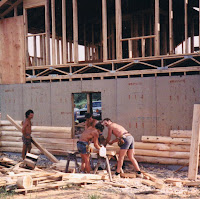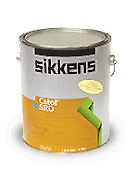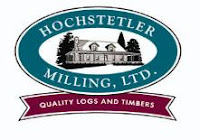Kiln-drying provides many important benefits. First, it produces logs that are more uniform and dimensionally stable. Drying in a controlled environment minimizes checking. Also, any logs that exhibit severe stress changes prior to milling can be culled. The result will be a more uniform appearance for wall logs and tighter wood joints.
Second, timbers are sanitized when they are heated to 180 degrees F. in a kiln. Such heat kills mold, wood decay fungi, and any insects, their eggs, or larvae.
Third, pitch in the wood is crystallized by the heat of the kiln. This prevents the sticky substance from seeping through the logs.
Fourth, more than 10,000 pounds of water can be removed from a typical log house during the kiln-drying process. This significantly reduces weight for both shipping and worksite handling of the logs.
The final benefit to proper kiln-drying is that interior and exterior finishes can be immediately applied after construction. These finish applications tend to penetrate deeper and therefore last longer on kin-dried wood.
While it is true that some of these benefits may also be realized by proper air drying, there are some benefits that simply don't result from anything except kiln-drying. Kiln-drying can reduce wood moisture below what is possible with air-drying. This results in better end-use performance in heated buildings and in low-humidity locations. Additional benefits besides those above include more stabile wood, increased strength and stiffness, and tighter holding of screws. Strongwood logs are never sprayed or treated with any kind of chemicals.
I am amazed as I travel and look at homes from many different manufacturers and review their marketing materials. Many companies claim that they kiln-dry their logs. Some boast that they do not kiln dry but that they air dry their logs and suggest that it is better than kiln-drying. Because the logs of some companies are not fully dried, some manufacturers have unnecessarily elaborate assembly systems to account for shrinkage or settling. Some companies indicate that they dry their logs down to 23% moisture. Others do better and dry down to the critical 15% to 19% range. But, you have to read the fine print to find that they may actually only dry to the first 1 inch of thickness!
The drying processes used by many log manufacturers is not that easy to decipher. You can be assured that Strongwood logs are dried to 15% to 19% ALL THE WAY THROUGH THE LOG. This drying process takes 28 to 34 days at optimum temperature. Remember, quality comes from paying attention to details and not from finding shortcuts or creating explanations for what it is not done properly. We want your home to last a lifetime.
(from http://www.strongwoodloghome.com/News/)
Tuesday, April 14, 2009
Subscribe to:
Post Comments (Atom)


















































No comments:
Post a Comment